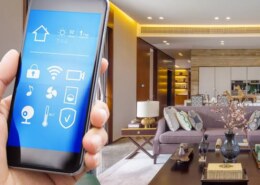The idea of a smart home — where lights adjust automatically, thermostats learn your habits, and voice assistants respond to your every need — once felt futuristic. Today, it’s reality. But before you dive headfirst into home automation, it’s important to weigh both the benefits and the potential downsides.
The Pros of a Smart Home
1. Convenience & Comfort
From adjusting lighting and temperature with a voice command to unlocking your door remotely, smart home devices make everyday tasks easier. Automations can simplify routines — like setting a “Good Night” scene that turns off lights, locks doors, and lowers the thermostat.
2. Energy Efficiency
Smart thermostats, lighting systems, and appliances can help reduce your energy usage. They adapt to your schedule and preferences, often leading to lower utility bills over time.
3. Enhanced Security
Smart doorbells, cameras, motion sensors, and locks add a layer of security. You can monitor your home in real-time from anywhere, get alerts for suspicious activity, and even grant access to visitors remotely.
4. Accessibility
For the elderly, people with disabilities, or anyone with mobility issues, voice commands and automation make life significantly easier — from adjusting blinds to making emergency calls.
5. Remote Control & Monitoring
Whether you’re at work or on vacation, you can monitor and manage your home systems from your phone. Forgot to turn off the stove? Some smart appliances can alert you — or shut off automatically.
The Cons of a Smart Home
1. Privacy Concerns
Smart devices collect data — and in some cases, a lot of it. Concerns about how companies use and protect that data are valid. Microphones, cameras, and online connectivity open potential doors for breaches.
2. Security Risks
Hackers can potentially gain access to your home network through poorly secured devices. Without strong passwords, firewalls, and regular updates, your smart home could become a vulnerability.
3. Cost
Smart devices often come with a higher upfront cost than traditional alternatives. While some systems save money in the long run, outfitting your home can be pricey — especially if you’re going for a full setup.
4. Compatibility & Complexity
Not all devices play nicely together. Different brands may use different ecosystems (Google Home, Alexa, Apple HomeKit, etc.), making integration tricky. Plus, troubleshooting can become complicated for less tech-savvy users.
5. Reliance on Internet & Power
Most smart homes require stable internet connections and power. A service outage can leave you without access to lighting, heating, or security systems — a major inconvenience.
Is a Smart Home Right for You?
That depends on your lifestyle, budget, and comfort with technology. You don’t need to go all-in at once — many start with a few devices and scale up. The key is to balance convenience with security, and automation with control.
Final Thought:
A smart home can make life easier, more efficient, and even safer. But it’s important to stay informed and cautious. Like any technology, it’s most powerful — and safest — when used mindfully.

